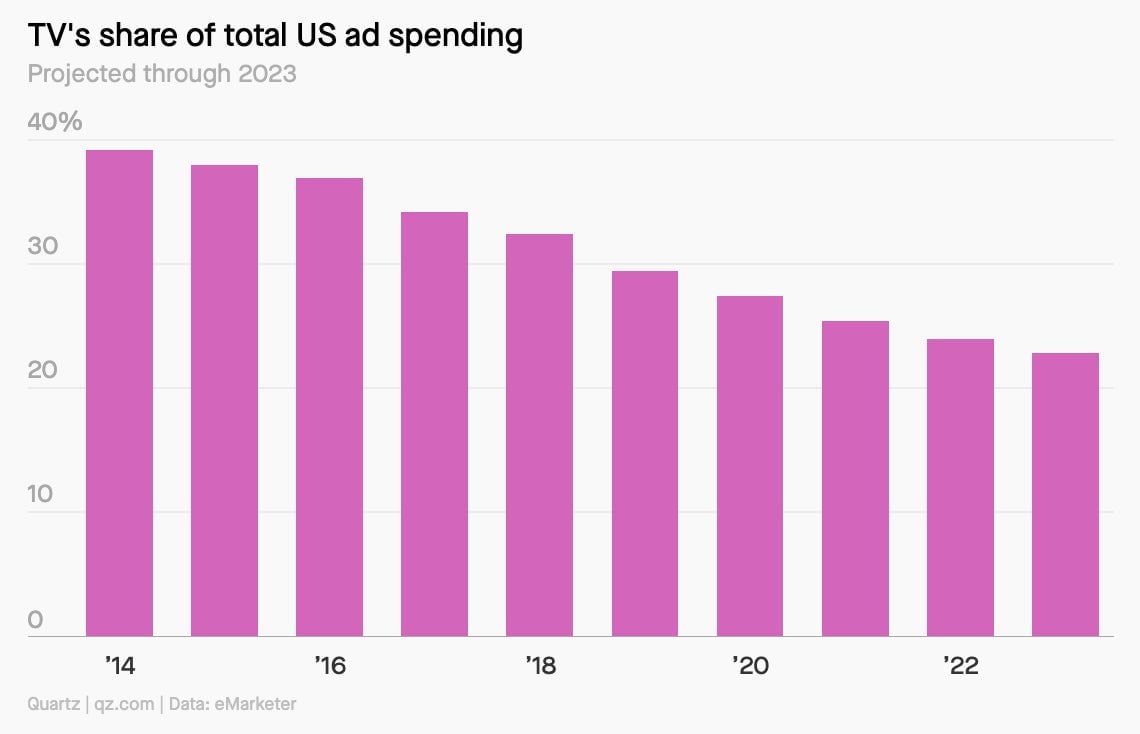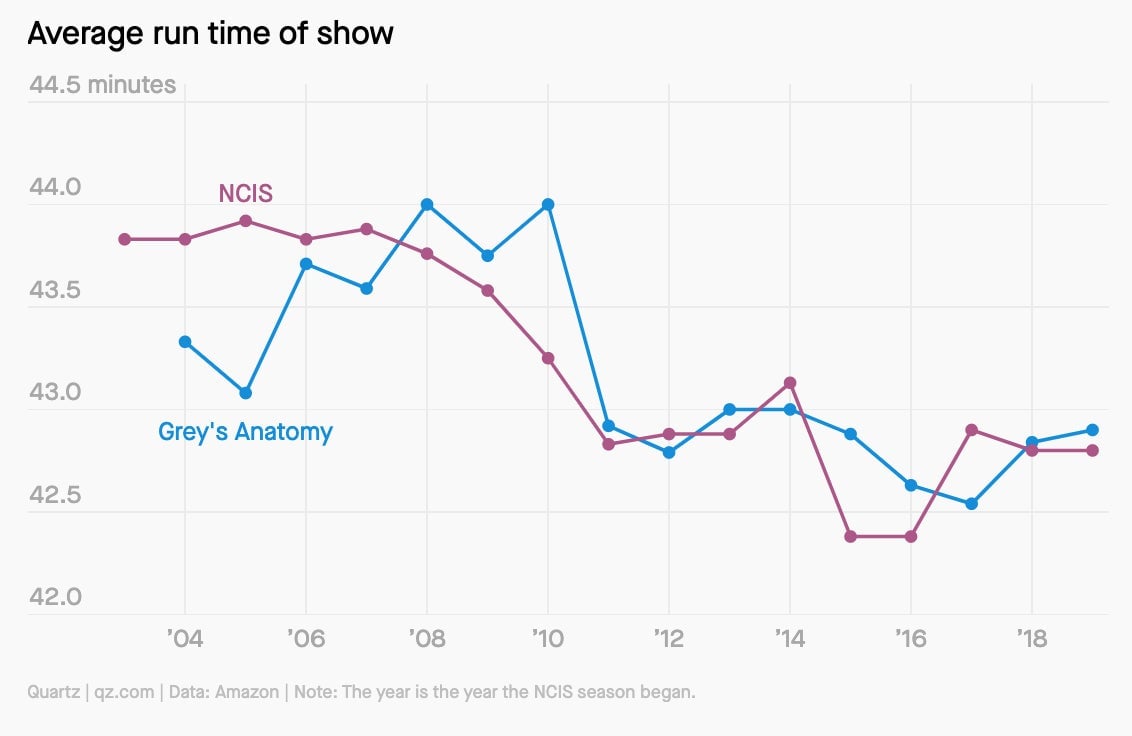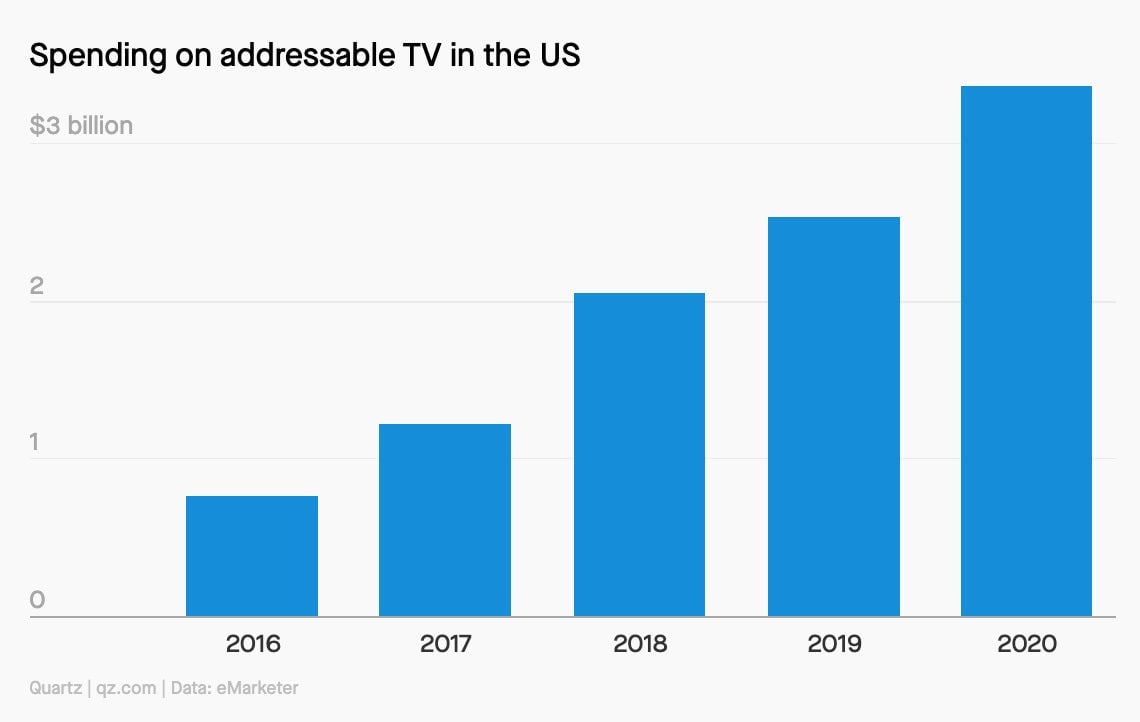This week in membership: The TV ad of the future
{{section_end}} {{section_start}}

{{section_end}} {{section_start}}
🤔Here’s Why
1️⃣ TV ads are still the best way to reach a lot of people at once, but it’s hard to measure their effectiveness. 2️⃣ Commercials have gotten longer, forcing shows like The Simpsons and Grey’s Anatomy to get shorter. 3️⃣ But TV ads are about to become more personalized. 4️⃣ And lots of TV ads won’t be commercial breaks at all. 5️⃣ Meanwhile, the ad industry still has a long way to go in the way it represents Blackness.
📝 The Details
1️⃣ TV ads are still the best way to reach a lot of people at once, but it’s hard to measure their effectiveness.

TV has a problem: fewer people are watching, and those that are often hate the ads they’re being shown. Yet despite its shrinking and aging audience, advertisers still invest billions of dollars each year in the medium because they know, to some degree, that TV ads can get consumers to buy stuff. Therein lies perhaps its biggest issue: while it still has an audience, virtually every advertiser Quartz spoke to for this week’s field guide said it’s almost impossible to measure TV ads accurately enough to really know how effective they are. Audience metrics for TV ads are still primitive compared to the capabilities of digital platforms.
2️⃣ TV ads have gotten longer, forcing shows like The Simpsons and Grey’s Anatomy to get shorter.
Not only do we see more ads today than ever before, but those ads also take up more of our time. Many popular US network TV shows have gotten shorter over the last decade—because ad time has taken up a bigger part of every broadcast hour.

3️⃣ But TV ads are about to become more personalized.
Reinventing the TV ad experience starts with better data. Right now, no one—including the buyers and sellers of TV ads—knows much about the audience beyond sometimes age and general location. Better data enables “addressability,” or targeted TV ads. Imagine you and your next-door neighbor are watching the same live TV show at the same time, but during the first commercial break, you see an ad from Apple, and your neighbor gets an ad for Samsung. If you’re single, maybe you get an ad for a dating app, while your neighbor, who recently became a parent, gets ads for diapers.

4️⃣ And lots of TV ads won’t be commercial breaks at all.
Netflix doesn’t have commercials—and it won’t any time soon. But it has made several deals in recent years with brands like Coca-Cola, Ben & Jerry’s, and Sephora to collaborate on products. After New Coke was written into the third season of Stranger Things, Netflix approached the soda giant about a partnership. The result: Coke re-launched the “New Coke” brand for a limited time as a promotion for the TV show.
NBCUniversal, Disney, and WarnerMedia are all coming up with new “ad formats,” or innovative types of video ads that don’t fall under the umbrella of the traditional 15- to 30-second interruptive commercial break. One format all three companies are experimenting with is the “pause ad.” It’s simple: When you pause your video, a sponsored overlay will appear on your screen until you un-pause.
5️⃣ Meanwhile, the ad industry still has a long way to go in the way it represents Blackness.
Advertisers have a strong financial incentive to keep investing in diversity. A recent survey from the Geena Davis Institute on Gender in Media, for example, found that 38% of characters featured in advertisements at the 2019 Cannes Lions festival were people of color, compared to 26% in 2006, the earliest available data.
Still, racism in advertising is far from over—particularly when it comes to the problem of colorism. One way that many ads continue to perpetuate racial bias is by prioritizing light-skinned people as the chosen representatives of all Black people—what Jason Paul Chambers, an associate professor of advertising at the University of Illinois, calls the “lighter, brighter, better” approach. That approach perpetuates the harmful idea that whiteness, or proximity to whiteness, is the epitome of beauty, to which all people should aspire.
📚Read the field guide
How to save TV ads from extinction
📣 Sound off
Last week we asked you what you call on when you have to make a choice, as part of our field guide on decision making. Here’s what you said:
